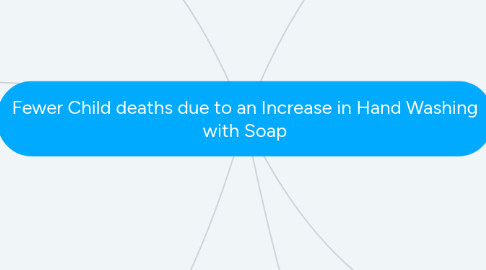
1. Zip Code
1.1. Depending on where someone live, their surroundings can make up a lot of how strong or vulnerable they are to diseases.
1.1.1. Living in a good zip code:
1.1.1.1. A good zip code will have public facilities that adhere to proper hygienic behaviors
1.1.2. Living in a bad zip code
1.1.2.1. A bad zip code won't readily have facilities where community members can properly clean themselves. This can mean a lack of clean water source, a lack of proper structural foundations, and no urgency to to try and change their surroundings.
2. Living Conditions
2.1. Living somewhere that takes pride in their cleanliness will most likely have lower rates of infectious diseases living amongst the household.
2.1.1. Living in a hospitable environment
2.2. Living in inadequate housing can perpetuate the spread of preventable diseases, especially one's that take little to non measures to keep the sanitation of the building up to code.
2.2.1. Living in a poor, inhospitable environment:
3. Income Level
3.1. Having the ability to purchase items and not focus nor harp on the price tag make everyday items, like soap, just another random item in the bathrooms or kitchen. People with a higher flow of money entering into households will underestimate how others are put in a pickle to either buy soap or food for the next couple of nights. It is taken for granted in most households.
3.1.1. An average to above average income status:
3.2. By having a substantially low income influx entering the household, items that are not a necessity become irrelevant an unobtainable. Soap is included as an unobtainable object in most third world countries; thus, because of this disease can spread at a higher rate from dirty hands and feet are roaming throughout the house, town, or community.
3.2.1. Low to poor income status:
4. Policy Making
4.1. If policy was enacted an array of beneficial outcomes can occur.
4.1.1. 1. Better codes for housing complexes and structures to adhere to (structural conditions and sanitary conditions).
4.1.2. 2. Having more public health advocates able to educate the mass to show the benefits using soap every time when you leave the bathroom.
4.1.3. 3. Pushing for more educators of the youth to purposefully teach proper hygienic behaviors using soap
4.1.4. 4. More places to distribute free soap in third world countries, which will have the greatest impact in controlling the death rate of young children.
4.2. If there remains no policy reforms:
4.2.1. If no agenda is pushed to make a beneficial outcome of having a policy, act, or law established, more and more young children will continue to fall short to preventable diseases.
5. Educational Level
5.1. High educational level:
5.1.1. If someone has a higher educational background they were exposed to using soap early on. Take first world countries for example: their are songs created, posters made, and lessons on what are the do's and don'ts for proper hygiene.
5.2. Little to none of an educational background:
5.2.1. If some cultures don't want to send their children to school, or communities don't have the ability to provide an education to everyone this can prove to be detrimental to a child as they won't be learning about the fundamentals. One being doing a simple task as washing one's hands before and after they eat or after they use a bathroom. Without a good educational base they will inevitably fbe exposed to an array of outcomes and situations common sense, acquired through knowledge, could have fixed.
6. Biological
6.1. Does gender play a role in the using soap to wash one's hands?
6.1.1. If we take a look at cultures that are still deeply rooted in traditions women are primarily cooking and cleaning; both of which require soap. Now this is not beneficial if they aren''t using soap regularly, but they are still exposed to the benefits soap provides if they are doing the minimal claning and cooking chores. Therefor, I propose that a correlation can be made indicating that more men would serum to preventable disease because they are not coming into contact with soap as much as a woman might. ** This can only be seen where communities, households, or cities have the ability to obtain soap.

